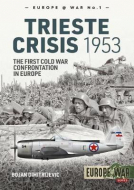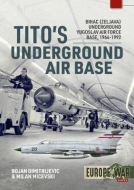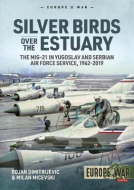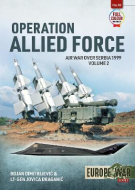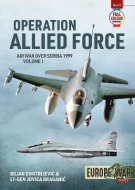
- Agriculture
- Architecture & Design
- Arts & Photography
- Biography
- Business
- Calendars and Diaries
- Childrens (All)
- Childrens (Illustrated)
- Childrens (Picture flats)
- Childrens (Te Reo)
- Classics
- Cooking, Food & Drink
- Craft & Hobbies
- Design (Art / Graphics)
- Design (Interiors)
- Education
- Fashion
- Fiction & Literature
- Fiction - Young Adult
- Gift Ideas
- Health & Wellbeing
- History
- Home & Garden
- Humour & Gift
- Instead of a Card Poems
- Military
- Music
- New Zealand
- NZ (History)
- NZ (Landscapes)
- NZ (Pictorial)
- Poetry
- Reference
- Religion & Faith
- Science & Nature
- Sport & Recreation
- Stationery
- Taschen : 40th Anniversary Edition
- Taschen : BA Basic Art
- Taschen : BU Bibliotheca Universalis
- Te Reo Māori
- Transport
- Travel
Bojan Dimitrijevic (6)
|
The Trieste Crisis 1953 (Europe@War 1)
ISBN: 9781912866342 Author: Bojan Dimitrijevic Publisher: Helion & Company The city of Trieste stands as a symbol of the Italian-Yugoslav border dispute in the first decade after the Second World War. The problem included a much larger... The city of Trieste stands as a symbol of the Italian-Yugoslav border dispute in the first decade after the Second World War. The problem included a much larger territory which covers the wider area of Trieste: ranging from the Julian Alps in the north to the base of the Istrian peninsula in the south; in the area where the Italians meet the South Slavs. Moreover, after the Second World War it was an area of confrontation for two ideologies: western democracy and communism. It was the place where the Iron Curtain lay between the two worlds for many decades of the Cold War. Often discussed from the socio-economic point of view, military aspects of the Trieste Crisis remain remarkably under-reported - and not only in the English language. One of the primary reasons is the relative unavailability of relevant Italian and Yugoslav documentation, but also the general focus on political and ethnic issues instead. The Trieste Crisis focusses on military-related affairs in this part of the world from the 'race to Trieste' of May 1945 until the creation of the Free Territory of Trieste and the culmination of tensions between Italy and former Yugoslavia, in October 1953. By the later date, the crisis had reached a point where it resulted in the largest deployment of military forces from both countries. Correspondingly, this work provides a detailed account of the Allied, Italian and Yugoslav military presence in the area befor, and their build-up during this near-war. Paying special attention to the description of the troops involved, their armament and equipment, the heavy weaponry deployed, and aerial and naval forces, The Trieste Crisis is illustrated by more than 150 photographs - most of them never published before - colour profiles and maps, and thus closing a gap in the history of the early Cold War in Europe of the mid-20th Century. Bind: paperback Pages: 80 Dimensions: 210 x 297 mm |
$49.99 |
|
|
UNEF The Yugoslav Contingent (Middle East@War 25)
ISBN: 9781912866410 Author: Bojan Dimitrijevic Publisher: Helion & Company Pursuing a policy of social revolution, national liberation, and non-alignment, Yugoslavia under Josip Broz Tito became involved in the Middle East in the mid-1... Pursuing a policy of social revolution, national liberation, and non-alignment, Yugoslavia under Josip Broz Tito became involved in the Middle East in the mid-1950s. Combined with some initial interest in economic and military assistance, this involvement found a positive reception among several Arab states, foremost Egypt under Gamal Abdel Nasser. Close personal ties between Tito and Nasser significantly contributed to the deployment of a contingent from the Yugoslav Popular Army (JNA) within the United Nations Emergency Force (UNEF) in Egypt, following the Suez War of 1956. Established in a hurry and deployed to Egypt in late November 1956, the JNA's part of the UNEF consisted of a reinforced reconnaissance battalion. The unit was manned by conscript soldiers and equipped with vehicles provided by the USA within the frame of the Mutual Defence Assistance Program (MDAP). The story of the unit's difficult task of entering the Sinai Peninsula right on the heels of withdrawing Israeli forces is the centerpiece of this book. While warmly welcomed by the local inhabitants, through late 1956 and all of 1957, the JNA contingent had the difficult task of reaching the demarcation lines, establishing observation posts, and making sure the cease-fire would be respected by all of the belligerents. For a force that understood itself to have a national-liberation and revolutionary role, rather than being an expeditionary military, the Yugoslav Popular Army thus went through a particularly unusual experience. The mission of the JNA's contingent with the UNEF on the Sinai came to a sudden end during the crisis leading to the June 1967 Arab-Israeli War: squeezed between the advancing Israeli forces, it had to be quickly evacuated, leaving all its heavy equipment and vehicles behind. Prepared with help of the original documentation from a host of archival sources of the former JNA, the book Yugoslav UNEF Contingent focuses foremost on the deployment immediately after the Suez Crisis of 1956. Providing detailed coverage of the much underreported closing chapter of that conflict, it is illustrated by more than 150 original photographs, most of which have never been published before. Bind: paperback Pages: 72 Dimensions: 210 x 297 mm |
$49.99 |
|
|
Titos Underground Air Base (Europe@War 4)
ISBN: 9781913118679 Authors: Bojan Dimitrijevic, Milan Micevski Publisher: Helion & Company he air force of Tito's Yugoslavia has had many different peculiarities - from a unique Cold War position of having operated a mix of US, Soviet, and indigenous ... he air force of Tito's Yugoslavia has had many different peculiarities - from a unique Cold War position of having operated a mix of US, Soviet, and indigenous aircraft and equipment, to the changeable strategies in case of war. One such feature was an entire underground air base constructed inside a hill near the town of Bihac, in western Bosnia. 'The Object' was the core, the heart, of this air base: it housed four MiG-21 squadrons for nearly 25 years, until the civil war tore Yugoslavia apart. Bind: paperback Pages: 72 Dimensions: 210 x 291 mm Publication Date: 15-10-2020 |
$49.99 |
|
|
Silver Birds Over the Estuary (Europe@War 6)
ISBN: 9781913118693 Authors: Bojan Dimitrijevic, Milan Micevski Publisher: Helion & Company The Mikoyan i Gurevich MiG-21 has been built in greater numbers than any other combat aircraft since 1945. It also saw service with more air forces than any oth... The Mikoyan i Gurevich MiG-21 has been built in greater numbers than any other combat aircraft since 1945. It also saw service with more air forces than any other type manufactured over the last 70 years. Locally designated the 'L' (for Lovac or fighter), for more than half a century over 260 MiG-21s in 12 different versions and sub-variants formed the backbone of the Yugoslav Air Force and Air Defense Force (JRV i PVO) and later the Serbian Air Force (RV i PVO). Entering service at the peak of the Cold War, the MiG-21 quickly replaced the US-supplied North American F-86E and F-86D Sabres in the Yugoslav inventory. The first version, MiG-21F-13, was followed by the MiG-21PFM in 1967, and MiG-21M/MF in 1970. Serving with the 204th Fighter Regiment, the task of these fighters was the air defense of Belgrade, capital of Yugoslavia. Bind: paperback Pages: 80 Dimensions: 210 x 291 mm |
$49.99 |
|
|
Operation Allied Force: Volume 2 (Europe@War 18)
ISBN: 9781915070654 Authors: Bojan Dimitrijevic, Jovica Draganic Publisher: Helion & Company On 24 March 1999, the North Atlantic Treaty Organization (NATO) launched Operation Allied Force against Serbia, claiming that Serb forces in Kosovo were engaged... On 24 March 1999, the North Atlantic Treaty Organization (NATO) launched Operation Allied Force against Serbia, claiming that Serb forces in Kosovo were engaged in ethnic cleansing and gross violations of human rights. Serbia, in turn, claimed to be fighting against an insurgency. This would be the last war in Europe during the 20th century. The second volume of Operation Allied Force provides in depth analyses of the operation. The authors have analyzed the experiences of both sides, starting from the command chain of the aviation of both air forces and the operations of the Yugoslav/Serb air defenses. This book explains many "firsts" that occurred in Operation Allied Force: the use of B-2A stealth bombers, new SEAD aviation tactics, and new munitions ranging from JDAM and JSOW to Graphite bombs. It also examines the tactics of Serbian air defenses to minimize the effects of the air strikes, by adopting movement and improvisation. Finally, the authors reveal the level of damage and casualties on the FR Yugoslavia side and comments upon the aircraft losses on both sides. The analyses are based upon original data as the authors, both the members of the joint Serbian Air Force/USAFE team which analyzed Operation Allied Force in 2005-2006, received the opportunity to compare the experiences of both sides. Operation Allied Force, Volume 2 is illustrated in full color with photographs, diagrams and other illustrations from the FRY/Serbian Air Force, official USAF/NATO photographs from the US National Archives and original color artworks commissioned for this project. Bind: paperback Pages: 104 Dimensions: 210 x 297 mm Publication Date: 20-06-2022 |
$55.00 |
|
|
Operation Allied Force: Volume 1 (Europe@War 11)
ISBN: 9781914059186 Authors: Bojan Dimitrijevic, Jovica Draganic Publisher: Helion & Company On 24 March 1999, the North Atlantic Treaty Organization (NATO) launched Operation Allied Force against Serbia. Lasting 78 days, this was an unusual conflict f... On 24 March 1999, the North Atlantic Treaty Organization (NATO) launched Operation Allied Force against Serbia. Lasting 78 days, this was an unusual conflict fought at several levels. The campaign was fought at the negotiation tables, in the media, and via cyber warfare. In the air, NATO sought to destroy or at least minimize the capability of the Serbian forces, while on the ground the Serbian forces fought the Kosovo-Albanian insurgency. It had an unusual outcome, too: without NATO losing a single soldier in direct action, they still forced the Serbian authorities and armed forces to withdraw from Kosovo, which in 2008 then proclaimed its independence. In turn, the war inflicted serious human and material losses upon the Serbians and the air force was particularly devastated by air strikes on its facilities. Nevertheless, many within NATO subsequently concluded that the skies over Serbia were as dangerous on the last night of this conflict as they were on its first. Largely based on cooperation with the joint commission of the Serbian Air Force and the U.S. Air Force in Europe (USAFE), Operation Allied Force provides a detailed account of NATO's aerial campaign, including reconstructions of operations by 'stealth' aircraft such as the F-117A and B-2A. This book also offers a detailed reconstruction of the planning and conduct of combat operations by the Serbian Air Force, with special emphasis on the attempts of its sole MiG-29 squadron to challenge enemy strike packages. This volume is illustrated by a rich collection of exclusive photography collected from both sides, and along with custom-drawn artworks provides a set of entirely new and unique insights into what was the last war fought in Europe during the 20th century. Bind: paperback Pages: 96 Dimensions: 210 x 297 mm Publication Date: 31-08-2021 |
$55.00 |


